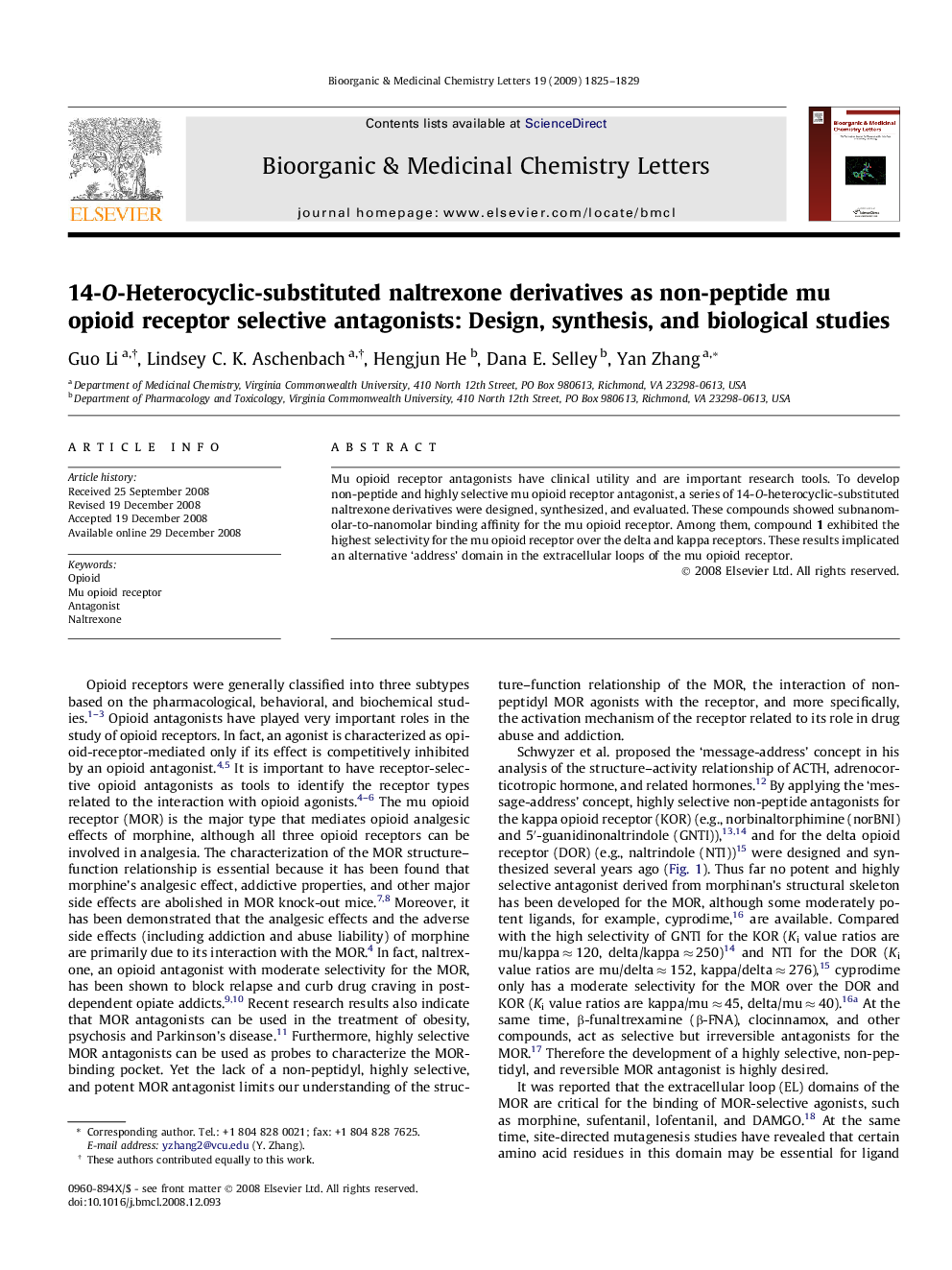| Article ID | Journal | Published Year | Pages | File Type |
|---|---|---|---|---|
| 1374214 | Bioorganic & Medicinal Chemistry Letters | 2009 | 5 Pages |
Mu opioid receptor antagonists have clinical utility and are important research tools. To develop non-peptide and highly selective mu opioid receptor antagonist, a series of 14-O-heterocyclic-substituted naltrexone derivatives were designed, synthesized, and evaluated. These compounds showed subnanomolar-to-nanomolar binding affinity for the mu opioid receptor. Among them, compound 1 exhibited the highest selectivity for the mu opioid receptor over the delta and kappa receptors. These results implicated an alternative ‘address’ domain in the extracellular loops of the mu opioid receptor.
Graphical abstractA series of 14-O-heterocyclic-substituted naltrexone derivatives were designed, synthesized, and evaluated. Among them, compound 1 showed binding affinity at subnanomolar level and highest selectivity for the mu opioid receptor.Figure optionsDownload full-size imageDownload as PowerPoint slide
